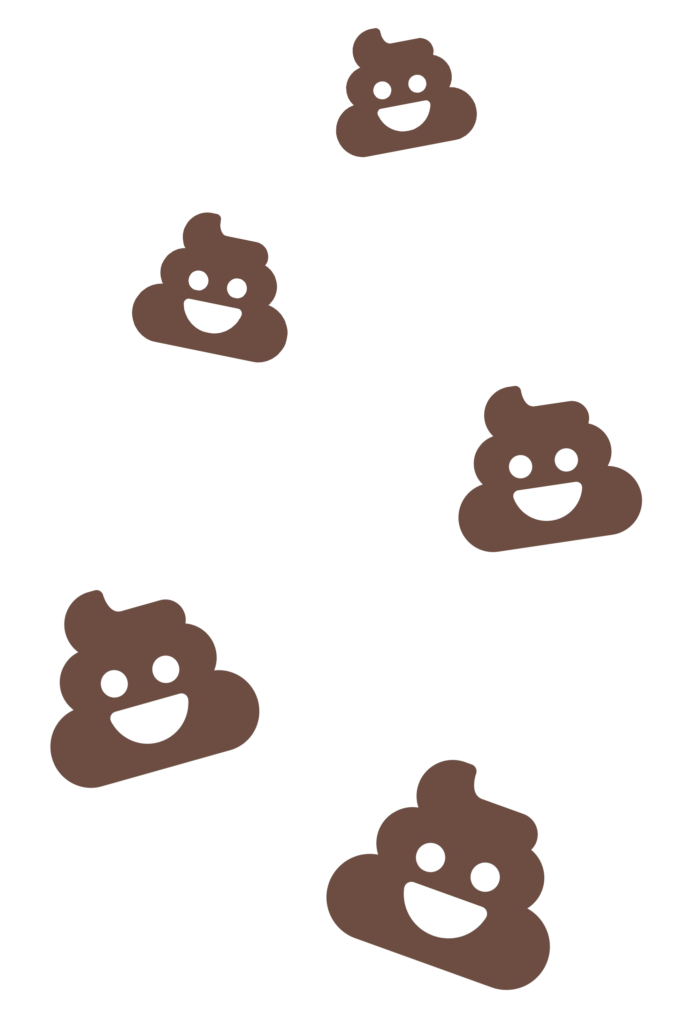
All About Poo...


A while ago we spoke about the importance of dietary fibre and bowel health. This week we’re going to discuss the state of our stools (poo, faeces, ‘number twos’) and what they can tell us about our health. So, what can our stools tell us? Lots it would seem!
What is poo?
Poo is what remains after we eat and digest our food. Mainly made up of undigested food (mostly fibre), bacteria, proteins, salts and water, poo is essentially a waste product.
What’s normal poo?
There is some variability in what constitutes a so called ‘normal’ stool with regards to colour, smell, frequency and consistency. Normal poo comes in a variety of colours. It tends to have an unpleasant, distinctive smell caused by bacteria present in stools which can produce smelly gases. Frequency (of passing stools) is highly variable and most people tend to pass stools around the same time each day. Stools are normally soft to firm in appearance, with an irregular log-like shape due to passage through the intestines.
Variations in the above are also possible, both when we are in good health or have a disease, which we may or may not be aware of. We’ll discuss some of these variations below and in future articles.
Does appearance matter?
The appearance of stools with regards to shape and form is important, as it may indicate the presence of certain digestive conditions. Medically, stools can be classified into seven different categories using the Bristol Stool Chart (see links below). Categories range from type one, separate hard lumps (like nuts) which are hard to pass (severe constipation), to type seven, a liquid (watery) consistency with no solid pieces (severe diarrhoea). Type three (sausage shaped with a crack in the surface) and type four (a smooth, soft sausage or snake appearance) are considered normal.
Does colour matter?
Stool colour is influenced by the food we eat and any underlying conditions we have. Stools come in a range of colours, some colour variations are considered normal, while others may signal potential underlying conditions requiring medical investigation/management. While occasional changes in stool colour are normal, ongoing red or black stools, or colour changes lasting for more than a few weeks should be discussed promptly with your doctor.
Is brown poo normal?
Stools are normally brown in colour, due to the food we eat and the presence of bile and bilirubin. Bile assists with fat digestion and is secreted by the liver as a yellowish green fluid, which changes to brown on excretion. Bilirubin is a pigment by-product arising from the breakdown of red blood cells in the body.
What about greenish poos?
Green or greenish stools are usually normal and often arise after eating green vegetables such as spinach or kale or green food colouring in foods or drinks. Use of iron supplements can also lead to greenish stools.
What about yellowish/orange poos?
Eating highly coloured foods can contribute to yellow/orange stools (beta-carotene in carrots, sweet potatoes, pumpkin). Yellow stools are quite common in babies and especially in breast fed infants. Certain medications rifampin (an antibiotic) and antacids that containing aluminium-hydroxide can also cause orange stools.
Greasy, smelly yellow stools or pale-yellow stools may indicate the presence of too much fat in the stools and possibly an underlying problem. For example, celiac disease, liver and gallbladder problems (cirrhosis, hepatitis, gallbladder problems) and pancreatic problems (chronic pancreatitis, pancreatic cancer, cystic fibrosis) may lead to yellow stools. A gut infection called giardiasis (caused by infection of a parasite called giardia) leads to foul-smelling diarrhoea that is often yellow (and other symptoms eg abdominal cramps). Stress and anxiety which speed up digestion can also lead to diarrhoea and yellow stools.
What about white or light-coloured poo?
Pale, light coloured stools or clay-coloured stools can be caused by some diarrheal medications or use of barium (a chalky liquid drunk before receiving X-rays of the upper part of the digestive tract). More serious causes include problems affecting bile production and metabolism (not enough bile being made; liver diseases such as hepatitis, blockages in ducts carrying bile because of gallstone(s), tumours, a congenital condition called biliary atresia); recall that bile contributes to normal brown stools.
What about red or reddish poo?
Red stools can arise from eating or drinking red foods/drinks (beetroot, red jelly). When not diet related, bright red stools signal the possible presence of blood from the lower part of the digestive tract (colon). This blood can be due to tumours in the colon (cancerous or non-cancerous), inflammation in the colon (colitis), the presence of growths (polyps) in the colon, conditions caused by the presence of small sacs in the wall of the colon (diverticular disease) or haemorrhoids (piles). Blood in the stools can signal serious conditions. If you do not think your red stools are diet related, you should see your doctor promptly.
What exactly are haemorrhoids?
Haemorrhoids are swollen veins in the lowest part of the rectum and anus. The blood vessels walls can stretch and become thin leading the veins to bulge and get irritated, and/or bleed, when passing stools.
What about black poo?
Black stools usually arise from eating very dark coloured food, medication or use of a supplement, such as eating black liquorice and blueberries, taking iron supplements or bismuth subsalicylate found in anti-diarrheal agents. When not diet related, black stools can signal more serious problems such as bleeding in the digestive tract (old blood) due to ulcers, bleeding lesions or sores in the oesophagus arising from acid reflux, noncancerous tumours and cancer. If you don’t think your black stools are diet related, you should see your doctor promptly.
What’s normal frequency?
Bowel habits vary from person to person and there is a wide variation in what’s considered normal. For example, an adult’s bowel motions may vary from a frequency of three times per day to three times per week.
Any final words?
If you have any concerns about your health and wellbeing after reading this article, we suggest you make an appointment to speak with your GP as soon as possible. In the coming weeks, we’ll consider other aspects of bowel health such as constipation and diarrhoea.
Further Reading
WebMD. Digestive disorders. Slide show. What your poop type and colour mean.
https://www.webmd.com/digestive-disorders/ss/slideshow-poop-type-color
Information on the Bristol Stool Scale
https://www.webmd.boots.com/digestive-disorders/poo-chart-bristol-stool-scale
https://www.webmd.com/digestive-disorders/poop-chart-bristol-stool-scale
Information on types of poo, including different colours
https://www.healthline.com/health/digestive-health/types-of-poop#bristol-stool-scale2
https://www.healthline.com/health/digestive-health/types-of-poop#color3
